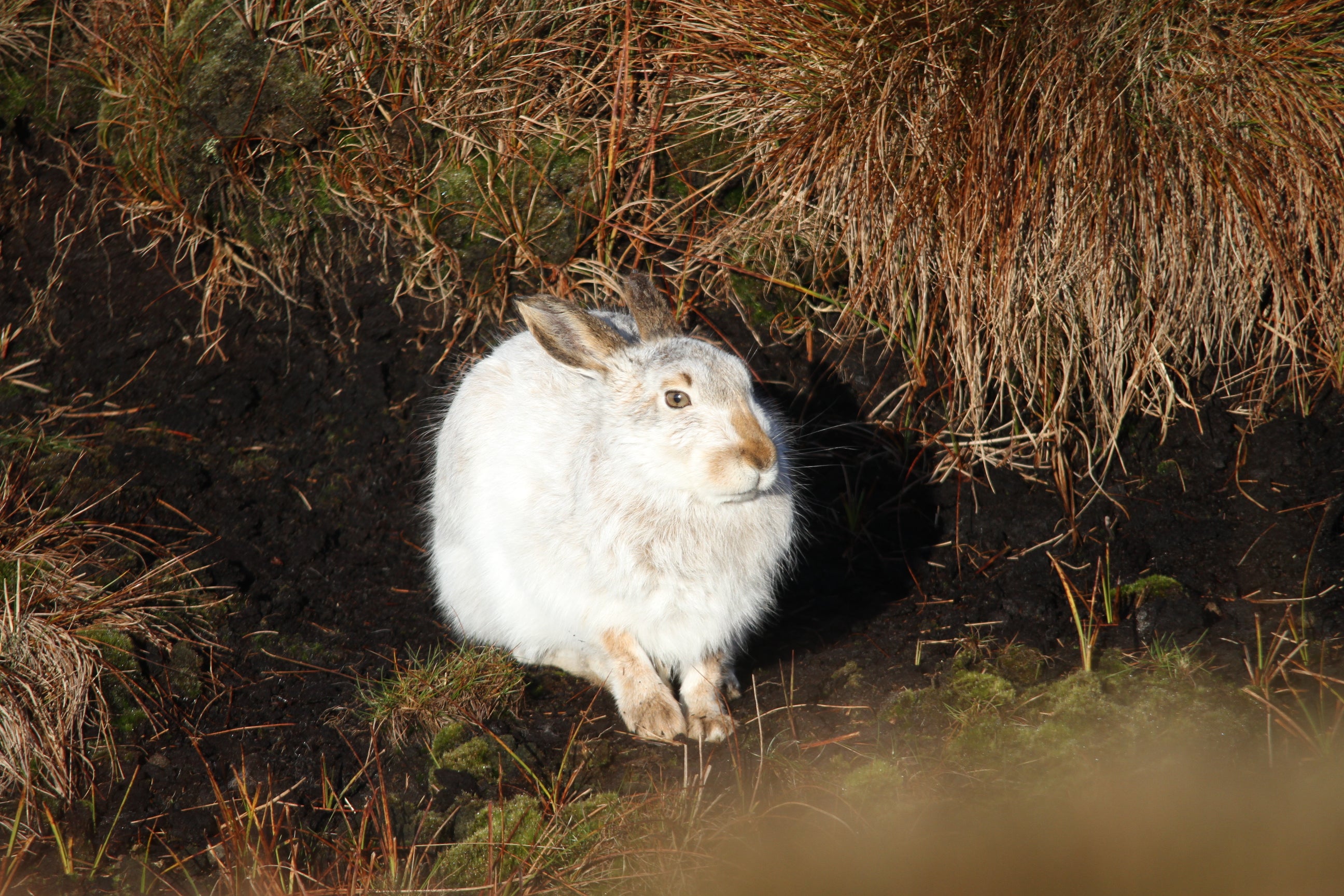Low numbers of mountain hares in England’s only population, study finds
The highest population density of the mammals in the Peak District was on restored peatland, the research showed.

England’s only mountain hare population has low numbers across most of its range – but restoring peatland offers the species hope, new research has found.
A study in the journal Ecology and Evolution estimates there are only about 3,500 mountain hares in the Peak District national park, which lead author Dr Carlos Bedson of Manchester Metropolitan University said was “deeply concerning”.
Mountain hares are native to Scotland and died out in England during the last Ice Age.
The mammals, whose coats turn white in the winter, were introduced into the English uplands in the mid-1800s by shooting estates, surviving now only in the Peak District.
The five-year study, based on surveys involving researchers walking more than 830 km (520 miles) of lines through the landscape, spotting almost 2,000 hares, estimated the population density is just 10 mountain hares per square kilometre.
Whilst there are a couple of places where mountain hares are abundant, most of the Peak District hills have very few hares remaining
It also found that restored upland blanket bog had the highest densities of hares, with more than 32 individuals per square kilometre, while land managed for grouse shooting had significantly lower levels of the animals.
Hare density on restored peatland was 2.7 times higher than on bogs managed for grouse shooting and 3.3 times higher than on heather moorland with grouse shoots, which had only 10 hares per square kilometre.
The habitat with the lowest density of hares was less than five per square kilometre on unmanaged heath with low shrubs.
Dr Bedson said: “Our findings are deeply concerning. Whilst there are a couple of places where mountain hares are abundant, most of the Peak District hills have very few hares remaining.
“The highest mountain hare densities were in ecologically-restored blanket bog, which has benefited from investment in rewetting, where the natural flow of water is restored by blocking gullies and planting mosses and heather.”
Efforts to restore upland bogs, by blocking up drainage ditches, restoring bare peat, removing grazing animals and planting bog species, have created more plant variety, providing a better environment for mountain hares, researchers suggest.
Study author Dr Neil Reid, from Queen’s University Belfast, said: “Whilst it’s alarming to learn how few hares remain, it’s important to remember that our research also highlights how conservation can, and does, make a difference.
“In this case, healthier bogs had more hares reflecting the wider benefits of rewetting peatlands.
“We hope these findings will lead to more rewetting of peatlands in a bid to increase not only hare population but biodiversity more generally.”
Land managed for grouse shooting is periodically burned to regenerate young heather for gamebirds, which can provide conditions for mountain hares – but seems to support fewer numbers than restored peatland, the researchers said.
The findings from the research, which used daytime surveying, contrasts with recent initial results using a methodology developed in Scotland, which involved counting the nocturnal animals at night in the Peak District.
Those counts, led by the Game and Wildlife Conservation Trust (GWCT) and conducted by gamekeepers on grouse moors, suggested much higher population densities, of 52-126 per square kilometre, similar to levels seen on grouse moors in Scotland.
Dr Bedson said the new study used a well-known method of “distance sampling” which estimates the proportion of animals seen in the landscape, surveying from January to April when the hares are white and stand out against the land.
He said it produced results that were very reliable and useful for monitoring.
This study provides new evidence that our work over the past 20 years has made a positive difference
A survey in 2002 estimated total numbers in the Peak District at 3,361 hares, with the present study giving an estimate of 3,562, suggesting a stable population over the past two decades.
Conservationists warned they faced an uncertain future with the low numbers – but that interventions to restore habitat, managed by groups such as the Moors for the Future Partnership and the National Trust, were helping.
Chris Dean, head of moors for the Future Partnership, said: “While the news is worrying that mountain hares in the Peak District face an uncertain future, this study provides new evidence that our work over the past 20 years has made a positive difference, improving the habitat for this emblematic species, to give it the best chance of survival.”
The study was funded by People’s Trust for Endangered Species, Hare Preservation Trust, British Mountaineering Council, Action for Hares South West and Penny Anderson Associates.